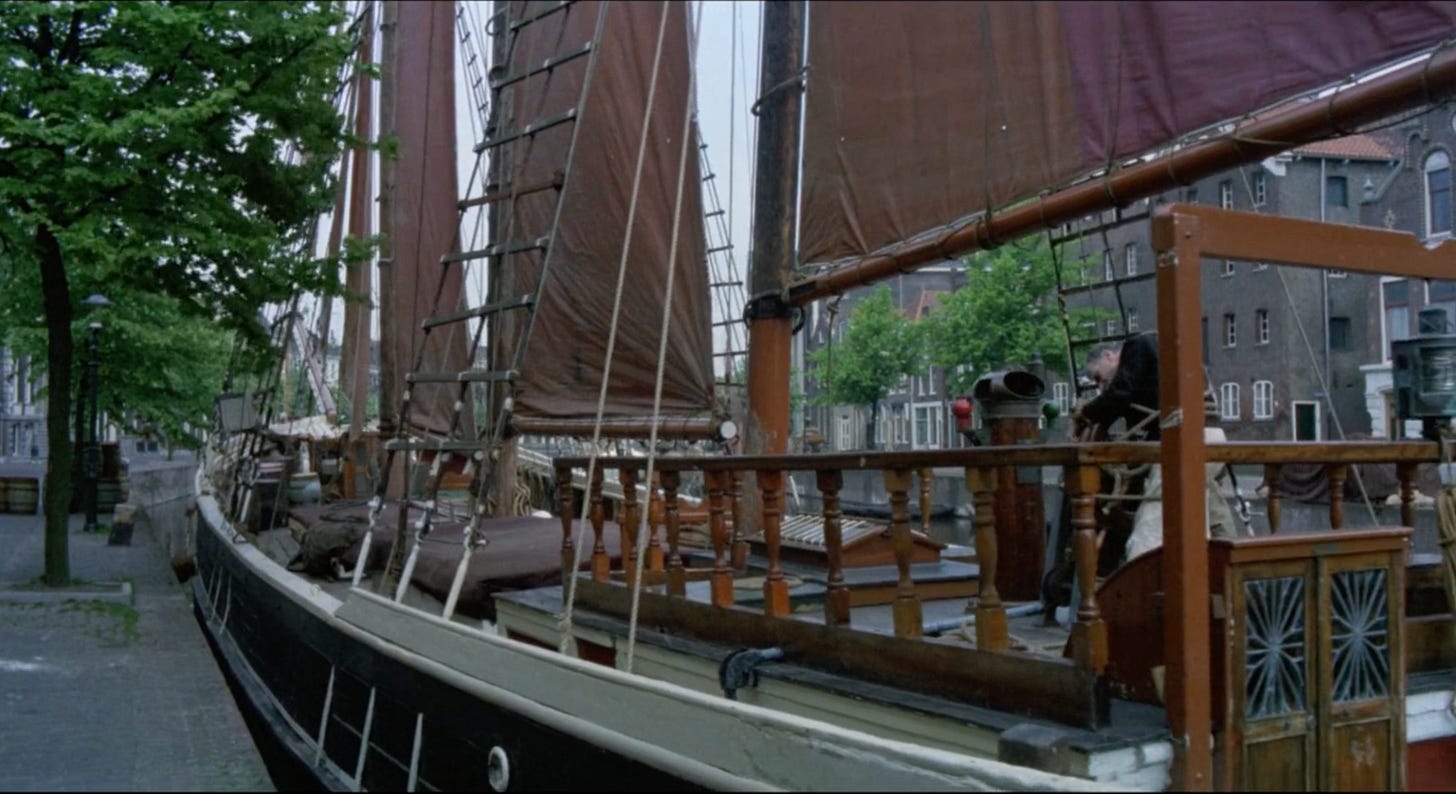Go Big or Go Home: NOSFERATU THE VAMPYRE
Most of our Nosferatu Week (see our socials, or next week’s Roundup) has covered how several iconic vampire movies pay homage to each other, and how they compose shots to guide the audience’s thoughts, eyes, or feelings.
But for this 70-second shot, let’s simply talk mechanics.
Big Setups, Big Stress
In Sidney Lumet’s fabulous autobiography Making Movies, he talks about the stress he experienced filming the iconic opening shot of Murder on the Orient Express, when circumstances and the general practicalities of filmmaking meant he only had one go at getting a shot of the train pulling out of the station.
I’ve not read anything in-depth about filming this boat scene, though this first-hand account talks about Herzog’s insistence on everything from locations to rats being ‘real’ while the whole shoot was “complicated by the refusal of the city to provide even a modicum of co-operation” so I have a few educated guesses.
Logistic Specifics
The sidewalks as well as the canal are empty of activity; this is difficult enough even *with* permits, and the above-linked story notes “[e]xtremely limited amounts of time were set for all exterior locations.” People who live in houses must be allowed to come and go, and bystanders outside the area do love to shout or get into shot.
It looks to be very early morning, likely to avoid pedestrians and boat traffic.
Dressing the frame (even throwing burlap blankets over anything which cannot be moved but looks too modern) takes time and noise, as does setting up the camera, lights (likely just bounces and frames or floppies, but they still take time and effort) but it’s really the boat which is the key.
The boat is large and unwieldy, and even presuming they have a dozen crew and/or a tow rope and/or another boat and/or a vehicle on shore — all various degrees of expensive, loud, and time consuming — the reset would take work and time they may not have.
Without modern CGI or a big SFX budget, there wouldn’t be an easy way to ‘paint out’ any intruders, adjust the supposedly-dead captain if he sneezed, or fix something which went wrong, so it’s really got to be a perfect 70 seconds.
All complicated by the fact that ‘perfect’ means going wrong, as the boat needs to run into the stone wall and the tree, though it can’t run into the wall too soon, or the tree in the wrong way which may divert it and/or tangle the ropes or break off a piece or . . .
Takeaways
While oners and heavily choreographed scenes and the like may draw the biggest ooohs and aaahs and ‘wow isn’t that complicated!?’ sometimes it’s a straightforward-seeming shot which takes the most work . . . and takes the most years off the life of a director or DP who is standing just out of frame sweating bullets that this goes off just so.



